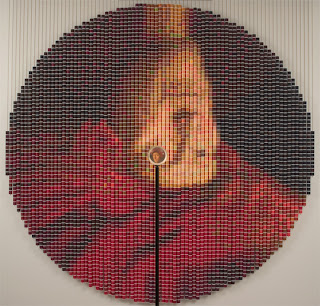The colors I wear are always very specific, expressive choices, related to my mood or surroundings. This is an ideal that I share with the late German Expressionist Franz Marc.
Marc (1880-1916) was a painter and printmaker, and one of the founders of the artistic collaborative known as Der Blaue Reiter (The Blue Rider).
Along with Auguste Macke and Wassily Kandinsky, Marc founded Der Blaue Reiter journal in 1911, which became synonymous with the German Expressionist movement in Munich.
View my Kandinsky post here.
View my Kandinsky post here.
In 1912, Marc met Robert Delaunay, who greatly influenced Marc's artistic shift toward Futurism.
Within months after being sent to the front in World War I, Marc was listed as a notable artist and was slated to be removed from combat. However, he was killed in battle in 1916, before he could be sent home.
For Marc, particular colors had very specific meanings. For example, blue signified masculinity or spirituality, and red symbolized violence.
"Art is nothing but the expression of our dream; the more we surrender to it the closer we get to the inner truth of things, our dream-life, the true life that scorns questions and does not see them." --Franz Marc
I'm wearing a vintage silk blouse, thrifted Ellen Tracy silk skirt, vintage cardigan, Urban Outfitters socks, whistle pendant from the Brooklyn Flea, and Marni shoes.
[Marc images from artmight.com, Leicester Arts and Museums Service, wikimedia.org, and karlshuker.blogspot.com, respectively.]










